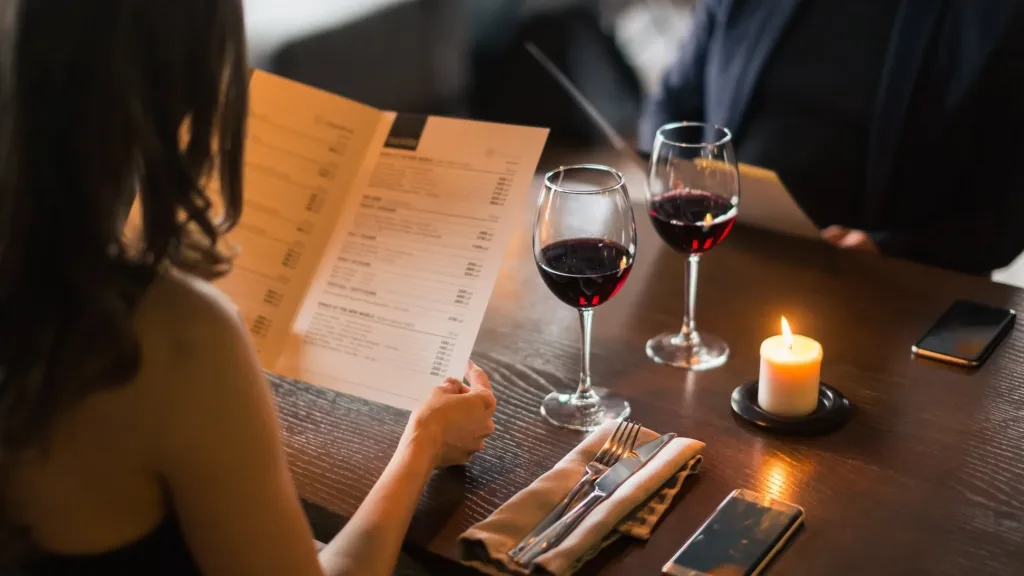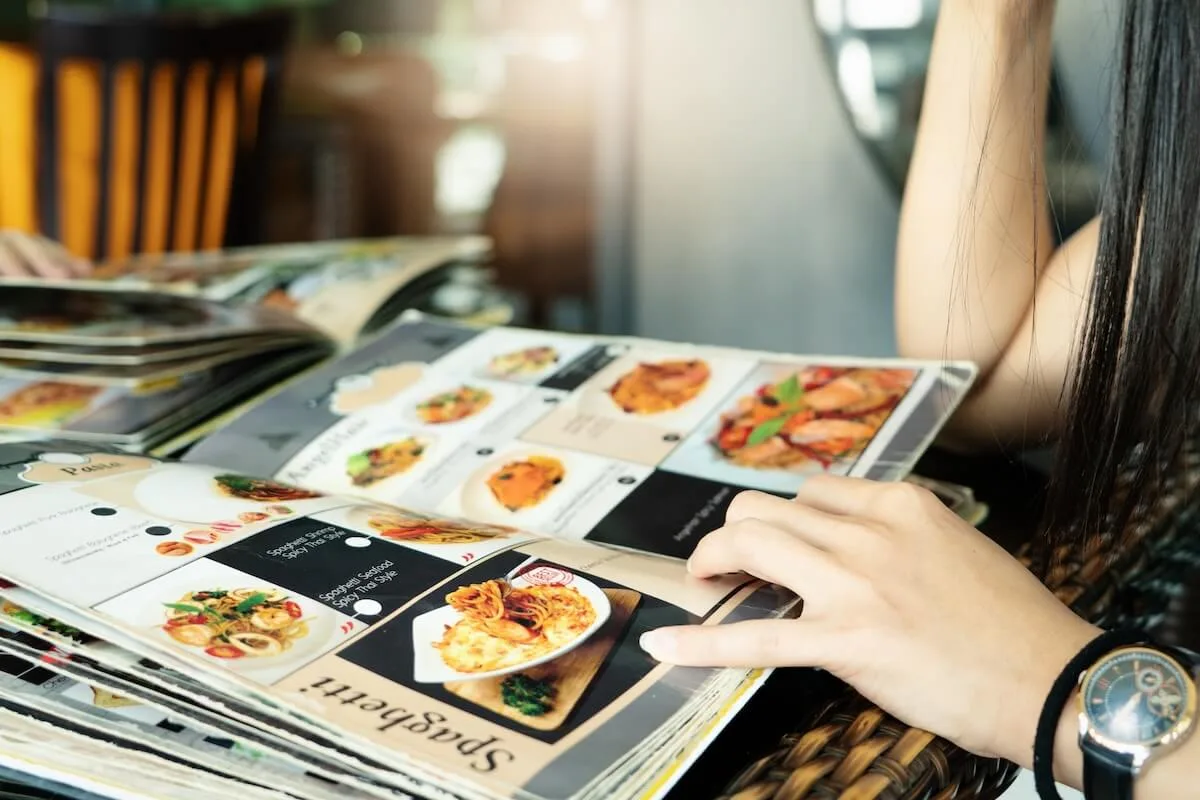Restaurant menu ideas from concept to completion
Skip the article and turn takeaways into action by scheduling a call with our team.
Your menu is the single most important piece of information customers have about your restaurant. It’s also the central focus of any good restaurant: After all, what is a restaurant if not the food it serves? Designing a menu involves every aspect of the business, from the central restaurant theme and branding to individual dishes and seasonal aspects. So, we’re here to discuss restaurant menu ideas from concept to completion.
A restaurant menu can vary with the seasons, and doing so can keep concepts fresh and customers keen. Restaurants that adapt to both seasonal changes and overall trends can also lower their costs by tapping into seasonal produce, which also maintains freshness. Since fresh is almost always better, it’s a winning recipe.
Let’s dive into creative menu ideas to get some juices flowing and make your restaurant’s food as good as it can be.

Building your brand around menu items
Since your menu is the foundational centerpiece of information for your customers, you’ll want to make menu items as unique to your brand as possible. When designing a menu, consider not only what foods define your restaurant’s brand, but which are excluded from your brand. A restaurant is often better served by choosing a specific niche, i.e., Italian, Mexican, BBQ, or fast food, than by trying to be many things to many people.
So, when designing a food menu, start with a solid core of entrees, appetizers, and desserts—think 10-15 high-quality items total—to build your identity around. New restaurants or restaurants developing a new menu especially can benefit from a limited-menu concept, since a small menu keeps food costs down via a small inventory. Restaurant owners can fiddle with pricing until things click.
When developing your restaurant branding, you’ll want to choose a color theme, a font, and a logo. These will reflect the type of food and service you offer and give customers a glimpse into your overall ethos. A fine-dining restaurant will want simple, elegant designs and muted color schemes while fast food restaurants and food trucks can opt for more ostentatious and light-hearted themes.
Restaurant menu ideas: Incorporating seasonal influences

A good way to keep a restaurant menu fresh is to change it up with the seasons. Not only do seasonal influences allow for creative menu options, but seasonal menus also provide an opportunity to keep costs down by using seasonal produce.
- Turn to fresh, crisp, refreshing flavors with herb-forward concepts, like borrowing herby Vietnamese and spicy Thai concepts for fusion dishes, or alternatively leaning into punchy, sharp flavors like parmesan
- Add a brunch menu, especially if you have patio seating, so customers can enjoy fresh air
- Look to fresh veggies and fruits in-season for salads and healthy options like smoothies, poké bowls, and plant-based dishes
- Stay fresh at dinnertime with classics crowd-pleasers like roast chicken, risotto, and marinated grilled veggies
- Make your grill your star, with classics like grilled carne asada tacos, steaks, burgers, or grilled seafood
- Fusion flavors for sauces can liven up the summer, like Mexican-Korean BBQ sauce
- Include chilled options like fresh fruit, ice cream, salads, or cold soups
- Keep desserts in mind with classics like pies and cobblers or add your own twist
- Add refreshing cocktails and mocktails and crisp wines to your drink menu
- Lean into earthy, nutty, and comforting flavors for fall
- Make seasonal produce your friend with a variety of squash, sweet potatoes, and apples
- Warm soups and stews can evoke a sense of nostalgia and comfort
- Drinks can tap into fall flavors like cinnamon, caramel, ginger, and apple
- Hearty soups and stews can warm bellies and keep customers satisfied
- Go full out on seasonal entrees like prime rib, roast turkey, or a lamb rib roast for example
- Use seasonal veggies like Brussels sprouts, leeks, and root vegetables
- Winterize beverages like cocktails with cinnamon, nutmeg, and ginger, and consider offering mulled wine and cider
- Incorporate seasonal tastes like plums, pears, walnuts, and cranberries into classic desserts like apple pie for a unique winter taste
Tap into trends

Restaurants that keep ahead of food and drink trends can become trend setters and potentially even blow up on social media. Customers in 2025 have been looking to expand their dining experience with a number of new flavors and concepts. We analyzed the top Yelp search trends for 2024 so restaurants can make the most of 2025.
Take the burnaway cake for example. Offering burnaway cakes (which have a message that burns away) as an option can draw in crowds for birthdays, anniversaries, and more, expanding your potential customer base. Searches on Yelp for burnaway cakes jumped by more than 12,000% from 2023 to 2024, which represents a trend wildly on fire.
Tastings are also in style, with coffee flights and even egg flights gaining popularity. This indicates that customers are wanting to try a variety of dishes without a major commitment—so, break down some of your dishes into a tasting menu.
Customers are also searching for good deals in a tough economy. Consider offering combo specials—which aren’t just the realm of fast food. A bistro or fine dining restaurant can get a lot of mileage out of a prix fixe menu, for example, offering an appetizer, entree, dessert, and drink at a set price.
Sandwiches are always in style, and most eateries can find a way to incorporate them into their menu. Let your chefs experiment with sandwich options and you may have the next big thing on your hands.
Finally, keep in mind social trends. People are dining out in large groups again, so consider how you’d accommodate such groups. Offering a private dining room or promoting group dinners can be a way to get new customers in the door and cement your reputation as a social hub.
Restaurant menu design ideas

Restaurants that focus significantly on their physical menu can experience a boost in sales. Indeed, menu engineering is the idea of working around what makes customers tick—and what separates a good printed menu from a mediocre one. So, how can restaurateurs start with menu engineering?
First, you’ll want to run a cost analysis of each dish. That includes everything, down to the spices and flour used, so you know exactly how much each portion costs.
Second, consider the popularity of each dish using sales metrics. Which dishes sell the most and which sell the least? Why do those sell the most and least?
Third, note which dishes are your most profitable and least profitable. Cross reference those with your most popular and least popular, and rank them in four groups:
- High-profit, high-popularity dishes, or Stars
- High-profit, low-popularity items, or Puzzles
- Low-profit, high-popularity items, or Workhorses
- Low-profit, low-popularity items, or Duds
Dividing dishes into these categories will determine where they go on the menu. Before you get to item placement, however, you’ll need to choose how many pages your menu will be, what font and color scheme you’ll use, and whether to use photos and how many.
When placing menu items, keep in mind the Golden Triangle. When reading a menu, people first look at the top center, then top right, then top left. So, place the dishes you want to encourage (your Stars or Puzzles) in the top center and top right.
Place your Workhorses on the top left or lower down as customers are likely to order them, but they don’t need a prominent spot.
For dishes you really want to push, set aside a box towards the top or middle of the page—for example, for high-prestige items like filet mignon.
Place your Duds towards the bottom of the page as well as low-cost items. Occasionally, some low-selling menu items will need to be there even to satisfy special dietary needs (nothing personal).
Add menu descriptions for each dish to make them as appealing and understandable as possible. This can be invaluable especially if your restaurant specializes in dishes that are new or unique. Photos can go a long way in such cases as well.
For online menus, photos can be your best friend. Since the space requirements are very different on a restaurant website compared to a printed menu, you can use as many photos as you like. Really, the more the merrier. For online ordering via third-party apps, ensure your descriptions fit those on your menu and convey a dish thoroughly to customers.
Make the dining experience special
Once your menu is set up, you’ll need to get the word out to customers—and get customers in the door. Using a front-of-house management software suite like Yelp Guest Manager helps expand your customer base and encourage online reservations while giving your staff the tools they need to keep customer service exceptional.
Regularly updating your menu on Yelp to reflect changes keeps customers engaged. At the same time, restaurants that start using Guest Manager paired with Yelp Ads experience up to 2.3X the traffic on their Yelp Business Page.*
If you want to see how Guest Manager can work for you, reach out to us for a free demo. It can be the glue that binds your service together and turns new customers into regulars.
*Yelp Internal Data 2021. Based on average results from a sample study of restaurants that purchased Guest Manager and Yelp Ads for at least 90 days (in Q2-Q3 2021) versus the 90 days prior to making a purchase. Results may vary.